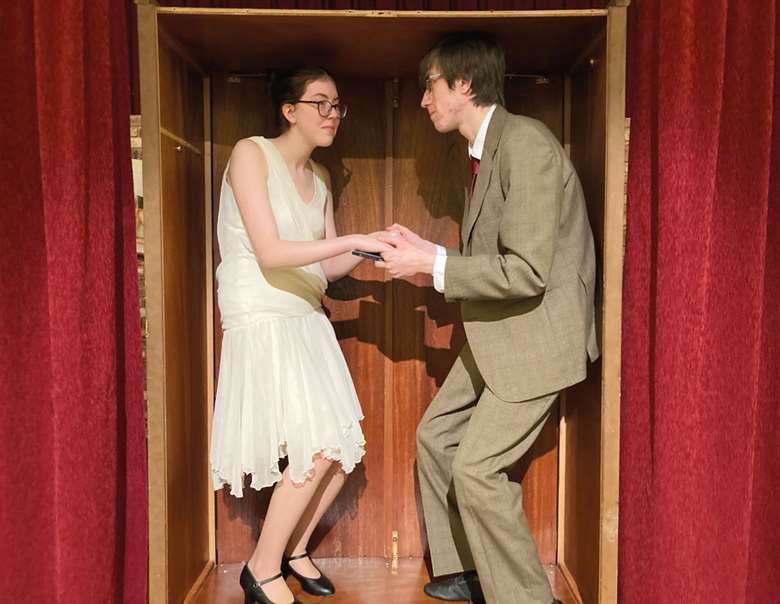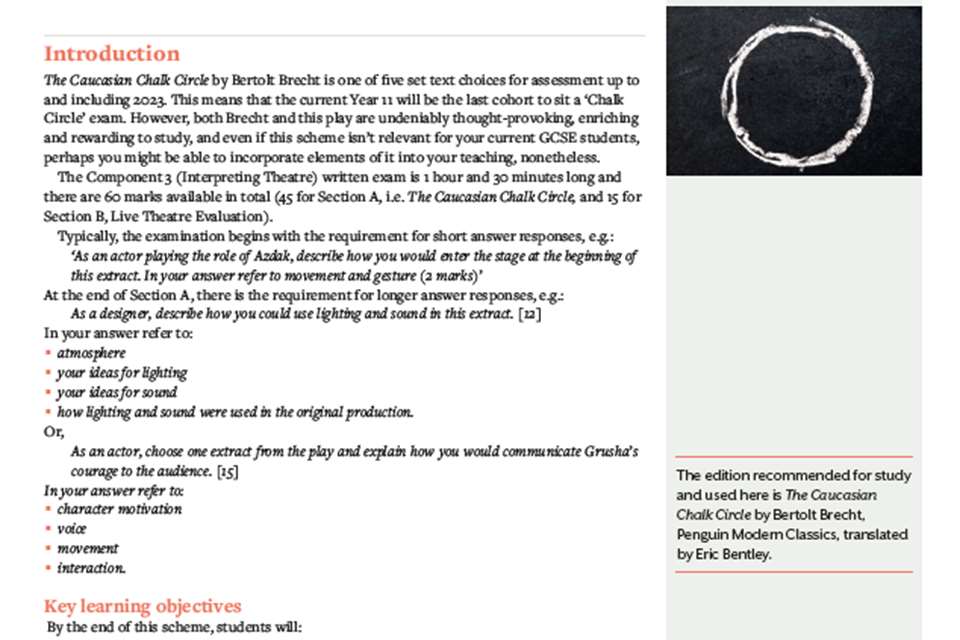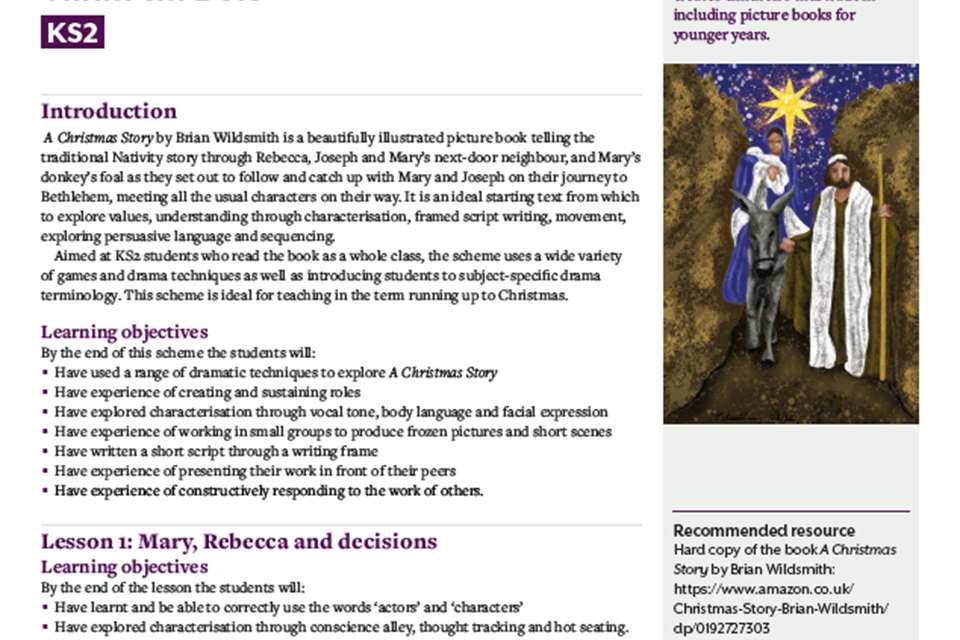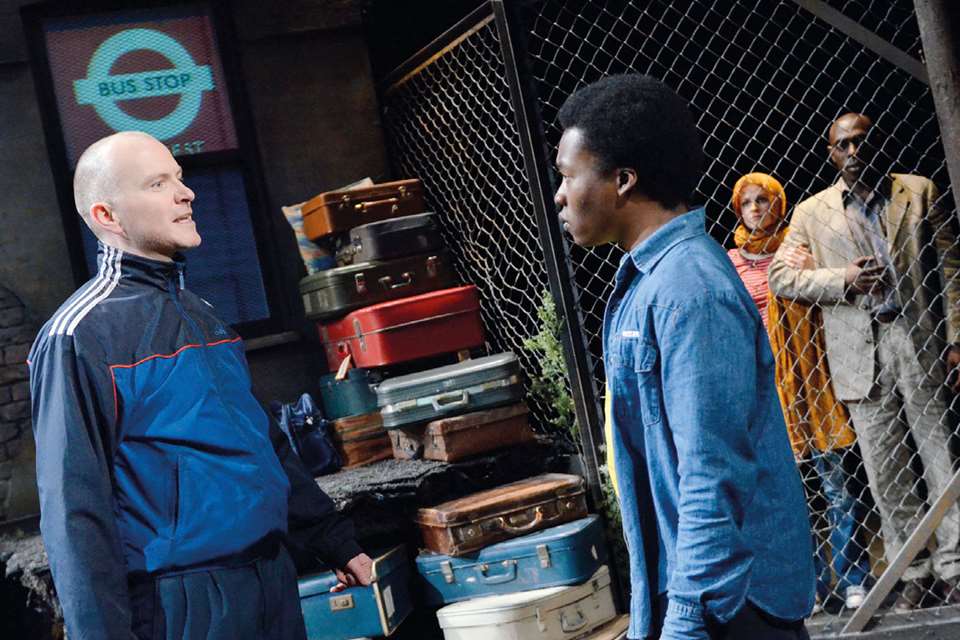The Wardrobe by Sam Holcroft
Sam Holcroft, Karl Gernert
Thursday, December 1, 2022
Each issue of D&T we bring you a page-to-stage focus on a play for performing with your students. This issue, theatre director Karl Gernert introduces Sam Holcroft's The Wardrobe.

When working in youth theatre, there are so many considerations that need to be taken into account when selecting a project: practical aspects (is there a good-sized cast and will each performer have enough to do?), safeguarding elements (is the content age-appropriate?) and the question of engagement: does this play speak to our performers? A play that has been commissioned specifically to be performed by young people is something that companies will naturally gravitate towards. Sam Holcroft's The Wardrobe is one such play.
Plot and structure
The plot and structure of The Wardrobe might initially appear simple, but they are born out of smart concepts with seemingly endless scope. Essentially, it is an extension of the phrase ‘if these walls could talk…’. The twelve (largely standalone) scenes all take place in the interior of a single wardrobe at various points within its history, from 1485 to the present day (-ish – more on this later). Each scene lasts around five minutes and features between one and four performers, who tell small self-contained stories, all featuring characters ages between nine and 18.
The reasons for being in the wardrobe vary: some are hiding or are a servant putting away a coat, while others are a young couple buying it at an antique fair. The stories are occupied with broader concerns such as class, loneliness, fear of separation, the pressure to conform and many more. It is fair to say that these themes are not confined to the past, and still affect young performers today. Within these stories are comedy, moments of drama and even a snippet of horror during the 1888 scene – its allusion to Jack The Ripper is one of several historical references peppered throughout the play.
Casting
The casting is flexible. Ages (within a year or so) can be adapted, as can genders. Furthermore, there is an option to not perform the entire play and instead perform scenes in isolation. This is a relatively straight-forward practice but must be exercised with caution. One of the strengths of the play is the cross-referencing of scenes – a throwaway moment in scene 11, for instance, adds a large layer of poignancy to the characters from the previous scene. Although the play will work structurally and sensically, there are some carefully nuanced moments that will be lost.
The structure of the play also allows variation in the number of performers needed. The play has 28 characters. This could be performed with 28 actors or doubling could be employed. Theoretically, it could be performed by four individuals, though this would involve quick changes in order to maintain a suitable pace. Aiming for 23 performers is probably best for a youth theatre, as everyone will have a similar amount of stage time and presence, making the rehearsal process easier and fairer.
Set and staging
The staging of the show seems simple, but it presents its own challenges. Put simply, a good wardrobe is needed! The play is viewed through the ‘back wall’ of the wardrobe, so when characters enter the space, they do so from the wardrobe doors upstage.
The restrictions of the space presents potential issues, particularly in a wide auditorium. As a result, an element of physical licence may be required to extend the ‘depth’ of the space, to avoid actors getting lost in shadows inside a three-walled structure.
For the performance of The Wardrobe I directed, we set our wardrobe on a revolving truck with a slightly extended floor. Drapes were then pulled in to either side of the truck to create a narrow and claustrophobic space. Between scenes, we would spin the wardrobe 180 degrees, so the closed front doors were facing the audience, before spinning it back for the next scene.
This served several purposes: actors and props could get in or out of the wardrobe unseen, and we projected simple information onto the front doors (date and location) to introduce each scene, while playing period-appropriate music. In terms of the final scene, originally set in 2014 (the year the play was published) we set the date as the actual day of performance, bringing the history of the wardrobe right up to date.








